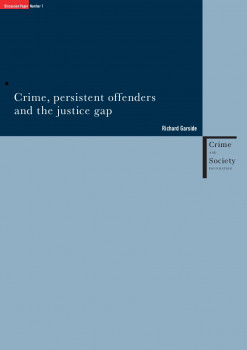Crime, persistent offenders and the justice gap

Crime, persistent offenders and the justice gap begins by outlining the problem of ‘attrition’ in the criminal justice system. Attrition refers to the gap between levels of known crime and the response of the criminal justice system in terms of prosecutions, convictions and sentencing. As this paper illustrates, different understandings of known crime lead to different conclusions about the attrition rate.
The paper then goes on to consider the question of crime: how much of it there is, and how it is measured. Informed and effective policy requires a clear understanding of the scope of the problem it seeks to address. Clarifying questions about crime levels, types and trends is a crucial first step in understanding how it might be tackled, prevented and reduced.
Finally the paper examines the propositions relating to persistent offenders and the role of the criminal justice system in reducing crime respectively, and some of the policy that has developed as a result. The paper concludes with some questions and pointers to future work.